Dacia Duster vs Jeep Compass – Which car suits you better?
Compare performance, boot capacity, efficiency and price at a glance.
Find out which car is the better choice for you – Dacia Duster or Jeep Compass?
Costs and Efficiency:
Price and efficiency are often the first things buyers look at. Here it becomes clear which model has the long-term edge – whether at the pump, the plug, or in purchase price.
Dacia Duster has a clearly advantage in terms of price – it starts at 16300 £, while the Jeep Compass costs 34200 £. That’s a price difference of around 17923 £.
Fuel consumption also shows a difference: Dacia Duster manages with 4.70 L and is therefore evident more efficient than the Jeep Compass with 5.80 L. The difference is about 1.10 L per 100 km.
Engine and Performance:
Power, torque and acceleration are the classic benchmarks for car enthusiasts – and here, some clear differences start to show.
When it comes to engine power, the Jeep Compass has a clearly perceptible edge – offering 213 HP compared to 158 HP. That’s roughly 55 HP more horsepower.
In acceleration from 0 to 100 km/h, the Jeep Compass is to a small extent quicker – completing the sprint in 8.50 s, while the Dacia Duster takes 9.40 s. That’s about 0.90 s faster.
In terms of top speed, the Jeep Compass performs minimal better – reaching 188 km/h, while the Dacia Duster tops out at 180 km/h. The difference is around 8 km/h.
There’s also a difference in torque: Jeep Compass pulls distinct stronger with 345 Nm compared to 230 Nm. That’s about 115 Nm difference.
Space and Everyday Use:
Beyond pure performance, interior space and usability matter most in daily life. This is where you see which car is more practical and versatile.
Both vehicles offer seating for 5 people.
In curb weight, Dacia Duster is evident lighter – 1377 kg compared to 1667 kg. The difference is around 290 kg.
In terms of boot space, the Jeep Compass offers minimal more room – 550 L compared to 517 L. That’s a difference of about 33 L.
In maximum load capacity, the Dacia Duster performs minimal better – up to 1609 L, which is about 48 L more than the Jeep Compass.
Who comes out on top?
Overall, the Jeep Compass shows itself to be edges ahead and secures the title of DriveDuel Champion.
It convinces with the more balanced overall package and proves to be the more versatile choice for everyday use.
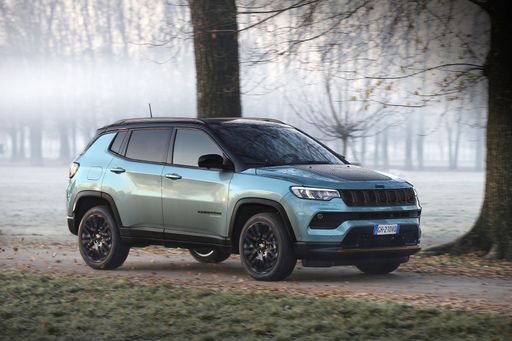 @ Jeep / Stellantis Media
@ Jeep / Stellantis Media
Jeep Compass
Dacia Duster
The Dacia Duster is a no-nonsense compact SUV that delivers rugged practicality and surprisingly comfortable everyday driving without fuss. It might not win any beauty contests, but its honest design, easy-to-live-with cabin and tough attitude make it a smart pick for buyers who want reliable transport without luxury frills.
details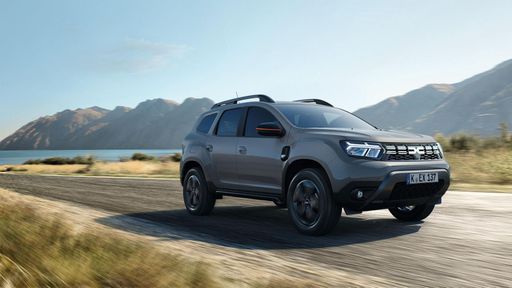 @ Dacia / Renault Group Media
@ Dacia / Renault Group Media
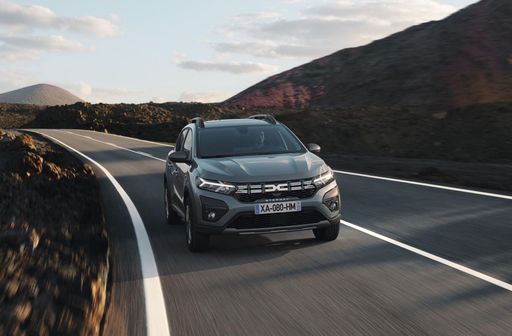 @ Dacia / Renault Group Media
@ Dacia / Renault Group Media
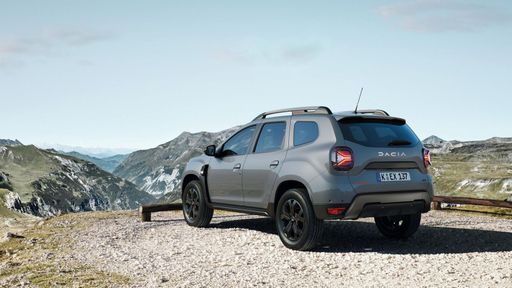 @ Dacia / Renault Group Media
@ Dacia / Renault Group Media
 @ Dacia / Renault Group Media
@ Dacia / Renault Group Media
Jeep Compass
The Jeep Compass packs classic Jeep styling with a surprisingly composed demeanor, equally at home turning heads in the city or tackling a weekend dirt track. Inside it's a pragmatic, user-friendly compact SUV that prioritizes comfort and versatility — a smart pick if you want a dose of adventure without giving up everyday sense.
details @ Jeep / Stellantis Media
@ Jeep / Stellantis Media
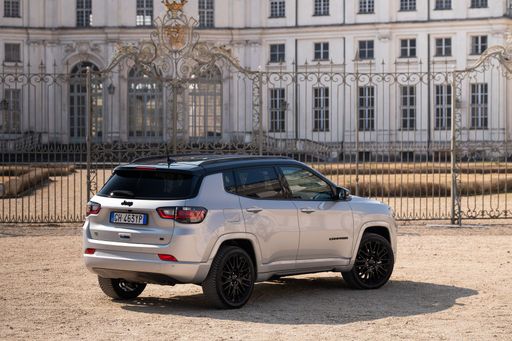 @ Jeep / Stellantis Media
@ Jeep / Stellantis Media
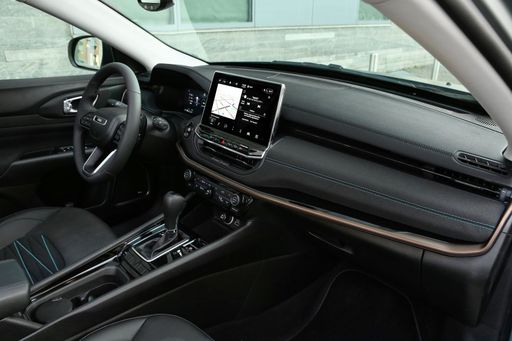 @ Jeep / Stellantis Media
@ Jeep / Stellantis Media
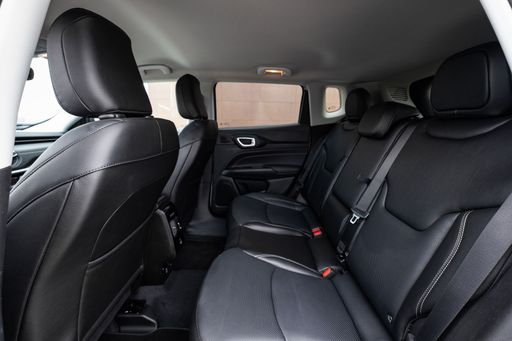 @ Jeep / Stellantis Media
@ Jeep / Stellantis Media
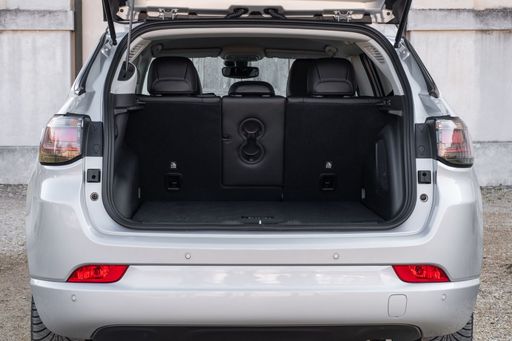 @ Jeep / Stellantis Media
@ Jeep / Stellantis Media
 @ Dacia / Renault Group Media
@ Dacia / Renault Group Media
|
 @ Jeep / Stellantis Media
@ Jeep / Stellantis Media
|
|
|
|
Costs and Consumption |
|
|---|---|
|
Price
16300 - 24900 £
|
Price
34200 - 43200 £
|
|
Consumption L/100km
4.7 - 7.5 L
|
Consumption L/100km
5.8 - 5.9 L
|
|
Consumption kWh/100km
-
|
Consumption kWh/100km
17.50 kWh
|
|
Electric Range
-
|
Electric Range
500 km
|
|
Battery Capacity
0.60 kWh
|
Battery Capacity
74 kWh
|
|
co2
107 - 124 g/km
|
co2
0 - 133 g/km
|
|
Fuel tank capacity
50 L
|
Fuel tank capacity
55 L
|
Dimensions and Body |
|
|---|---|
|
Body Type
SUV
|
Body Type
SUV
|
|
Seats
5
|
Seats
5
|
|
Doors
5
|
Doors
5
|
|
Curb weight
1377 - 1455 kg
|
Curb weight
1667 - 2198 kg
|
|
Trunk capacity
348 - 517 L
|
Trunk capacity
550 L
|
|
Length
4343 mm
|
Length
4552 mm
|
|
Width
1813 mm
|
Width
1928 mm
|
|
Height
1656 - 1659 mm
|
Height
1675 mm
|
|
Max trunk capacity
1414 - 1609 L
|
Max trunk capacity
1561 L
|
|
Payload
450 - 453 kg
|
Payload
-
|
Engine and Performance |
|
|---|---|
|
Engine Type
Petrol MHEV, Full Hybrid, LPG
|
Engine Type
Petrol MHEV, Electric
|
|
Transmission
Manuel, Automatic
|
Transmission
Automatic
|
|
Transmission Detail
Manual Gearbox, Automated Manual, Dual-Clutch Automatic
|
Transmission Detail
Dual-Clutch Automatic, Reduction Gearbox
|
|
Drive Type
Front-Wheel Drive, All-Wheel Drive
|
Drive Type
Front-Wheel Drive
|
|
Power HP
115 - 158 HP
|
Power HP
145 - 213 HP
|
|
Acceleration 0-100km/h
9.4 - 11.6 s
|
Acceleration 0-100km/h
8.5 - 10.3 s
|
|
Max Speed
180 km/h
|
Max Speed
180 - 188 km/h
|
|
Torque
190 - 230 Nm
|
Torque
230 - 345 Nm
|
|
Number of Cylinders
3 - 4
|
Number of Cylinders
3 - 4
|
|
Power kW
84 - 116 kW
|
Power kW
107 - 157 kW
|
|
Engine capacity
1199 - 1789 cm3
|
Engine capacity
1199 cm3
|
General |
|
|---|---|
|
Model Year
2025
|
Model Year
2025
|
|
CO2 Efficiency Class
D, C
|
CO2 Efficiency Class
D, A
|
|
Brand
Dacia
|
Brand
Jeep
|
What drivetrain options does the Dacia Duster have?
The Dacia Duster is offered with Front-Wheel Drive or All-Wheel Drive.
The prices and data displayed are estimates based on German list prices and may vary by country. This information is not legally binding.
